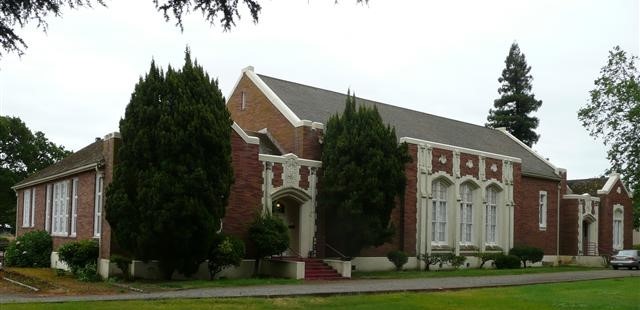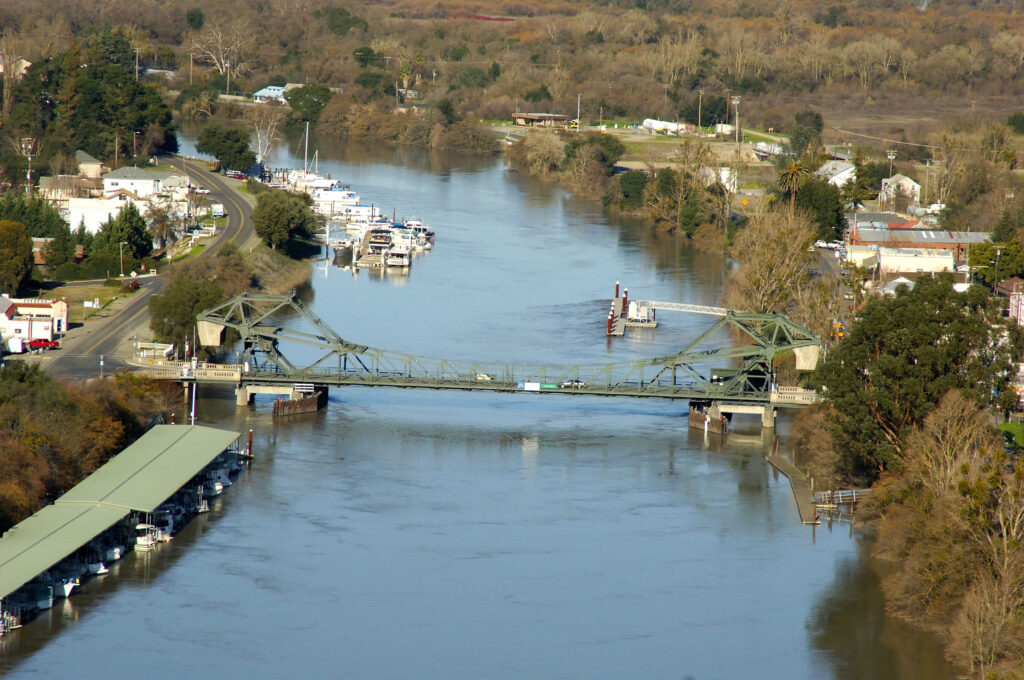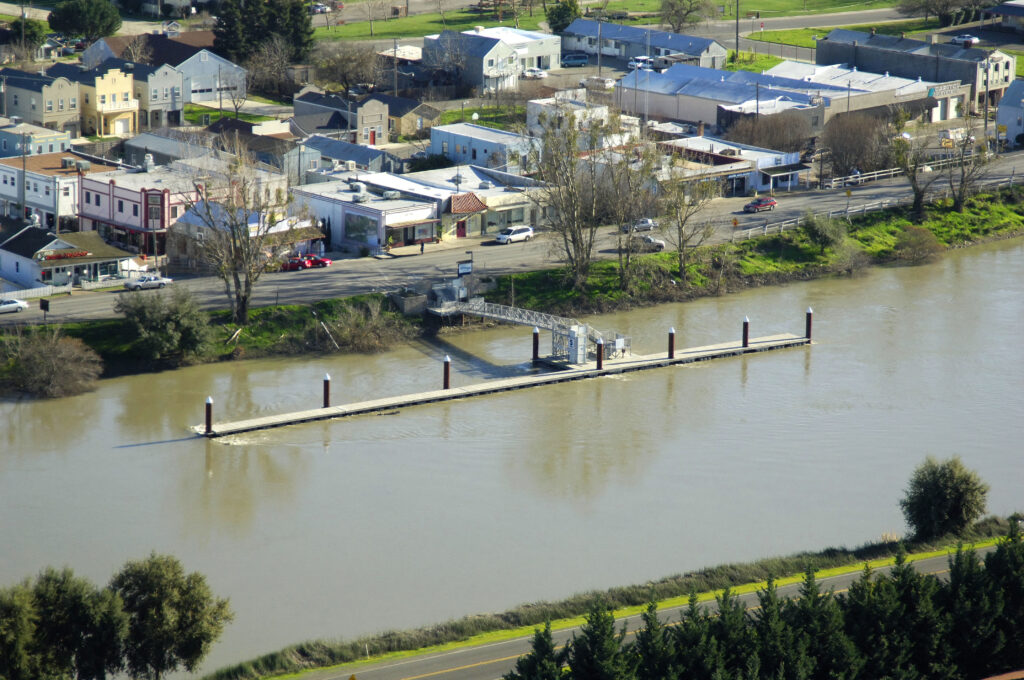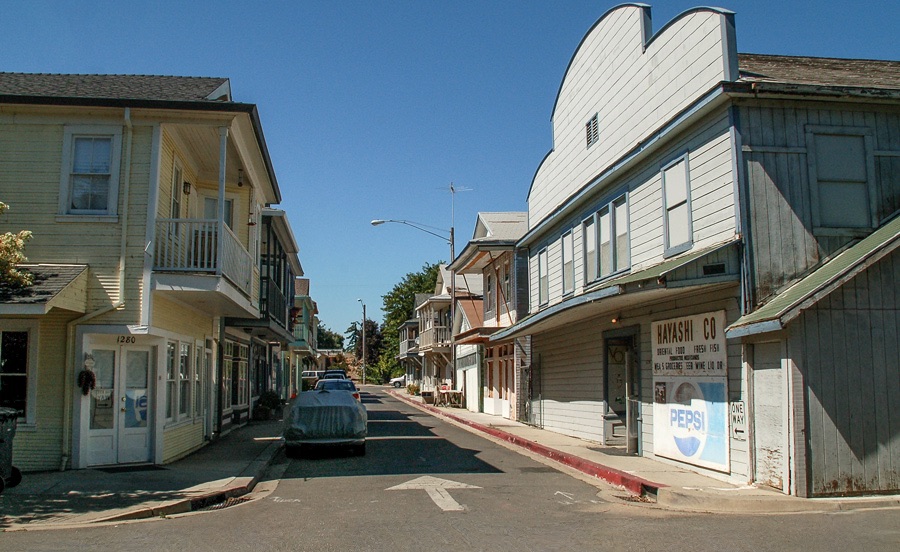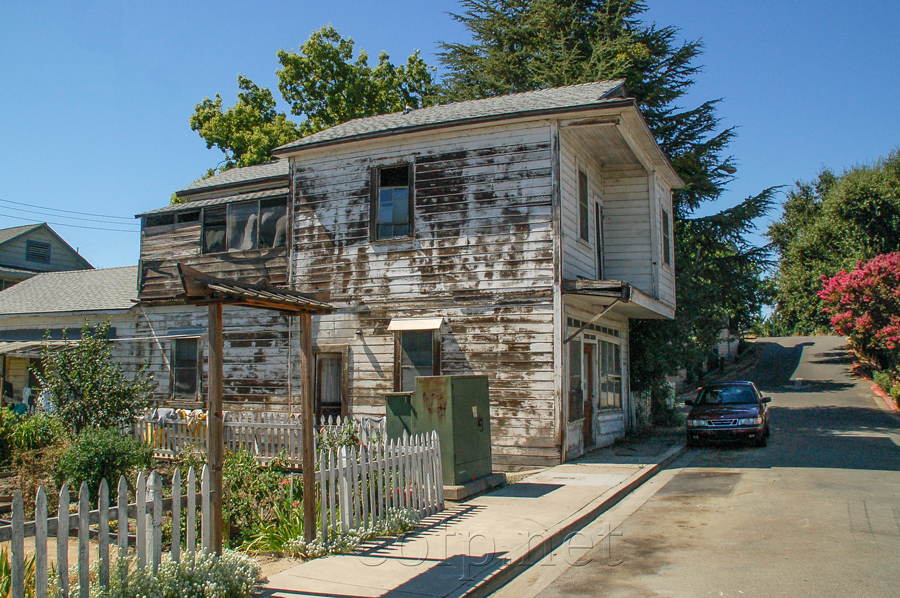Walnut Grove is a legacy town in the middle of the Sacramento River Delta, known in its early years for commercial and cultural establishments, including canneries, a theatre, and several European-style hotels.
Founded in 1850 by John W. Sharp of Ohio, Walnut Grove was one of the earliest settlements along the Sacramento River. Sharp chose the site because the area was abundant in walnut and oak forests. Eventually, these were used to fuel steamboats. The town became a major shipping port for agriculture products and fishing, with Bartlett pears and asparagus the primary produce.
After Sharp died in 1880, his heirs sold much of his estate to Agnes Brown and her son Alex, who opened a general store, hotel, and asparagus packing house, along with the Bank of Alex Brown.
While Clarksburg and Courtland upriver are also legacy towns, Walnut Grove remains the only one to still occupy both sides of the river. Initially, people ferried across the river until a bridge was built in 1916 to connect both sides. It was later replaced with the bridge that is still in use today, the first cantilevered counterweight bascule drawbridge west of the Mississippi.
In the mid-1870’s, the Chinese founded the first Delta settlement in Walnut Grove on the east side of the river. It turned into the largest Chinatown in the Delta, comprised of different residential groups, the Zhongshan and the Sze Yup. Each group spoke a different dialect and lived in separate areas of town. By 1914, there was a large population of Japanese and Chinese who owned 67 businesses in the town.
A 1915 fire destroyed almost 100 structures and resulted in a Zhongshan relocating and building their own town in Locke, a mile north. Another fire in 1937 destroyed the Sze Yup Chinatown in Walnut Grove. Most of the buildings standing in Walnut Grove’s Chinatown are post-1937. Most Chinese left Walnut Grove after the fire. Unfortunately, many of the Japanese people who were forcibly removed during World War II, did not return.
Walnut Grove is still a Delta farming hub with a diverse population. Some residents’ families have been there for generations, some newly arrived to work in the fields or enjoy small-town life. Ethnic groups include people of Portuguese, Italian, Filipino, Mexican, Chinese, and Japanese descent. There is an active Buddhist temple on east side of town whose membership worship and hold gatherings and cultural festivals.
Sights to see in Walnut Grove:
- Original Storefront Buildings: The buildings line the street on the east side of the river and look out upon the river.
- Off-Levee Buildings: A self-guided tour included historic sites like the Cummings blacksmith shop, the butcher shop, the Brown family residence and the Bank of Alex Brown building, the Jean Harvie Center (originally a school), the Walnut Grove Hotel, the Chinese Association building, Ike Hanlon’s Café, and 15 Japanese neighborhood buildings.
- The Pump House: Once housed a gambling establishment on the first floor and has beautiful decorative stuccowork and tiles on the exterior.
- Grand Island Mansion: The Italian style villa is the largest private estate in Northern California. Twenty-four thousand square feet with 58 rooms, it was designed by San Francisco’s J.W. Dolliver in 1917 for Louis Meyers and his wife, the Lubin heiress of the Weinstocks-Lubin department store fortune. Louis Meyer built an orchard empire, and entertained guests including writer Earle Stanley Gardner. The mansion was renovated by Terrance Black, grandnephew of the original architect, and is now open for weddings, receptions, corporate retreats and other gatherings.
